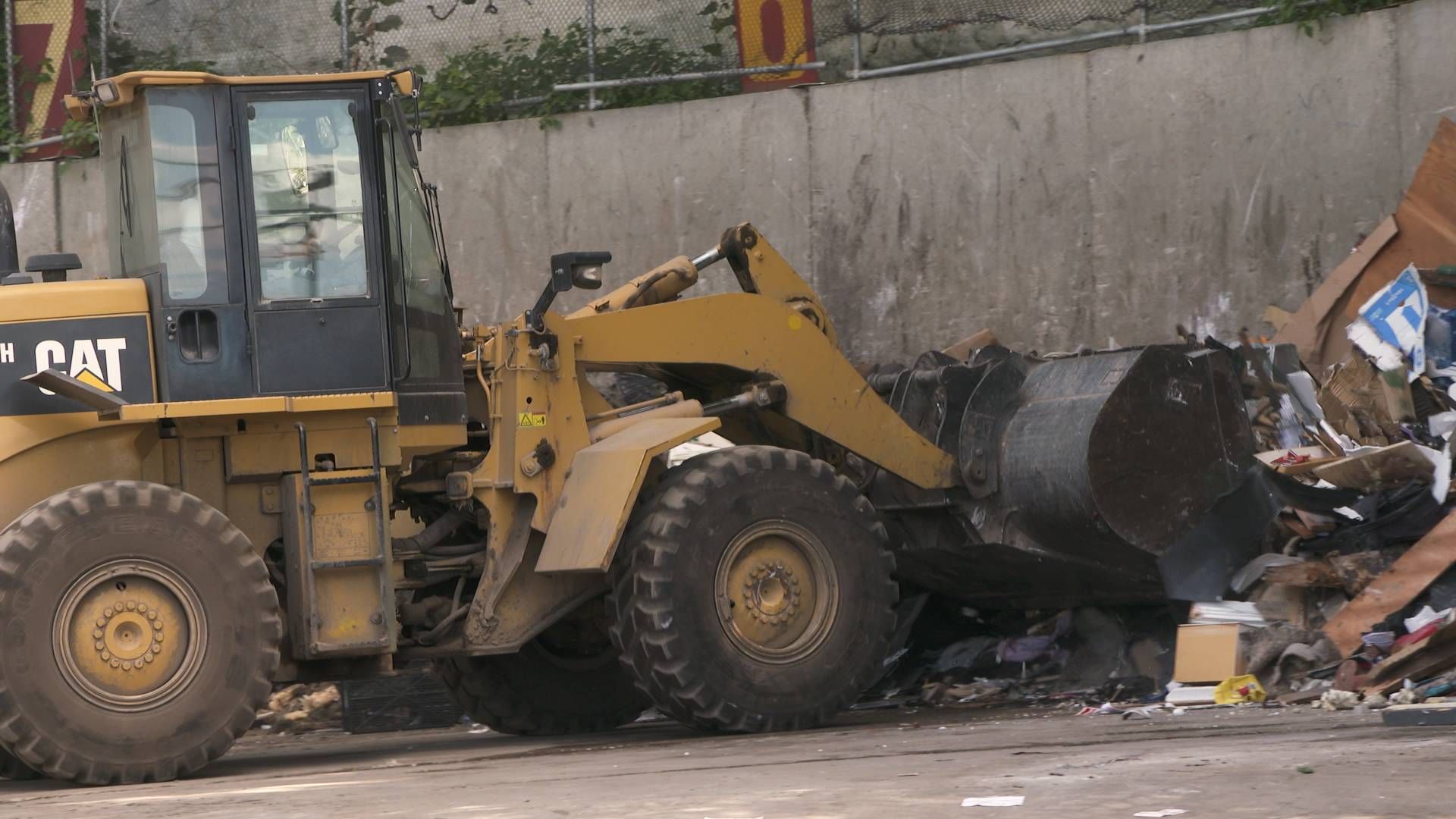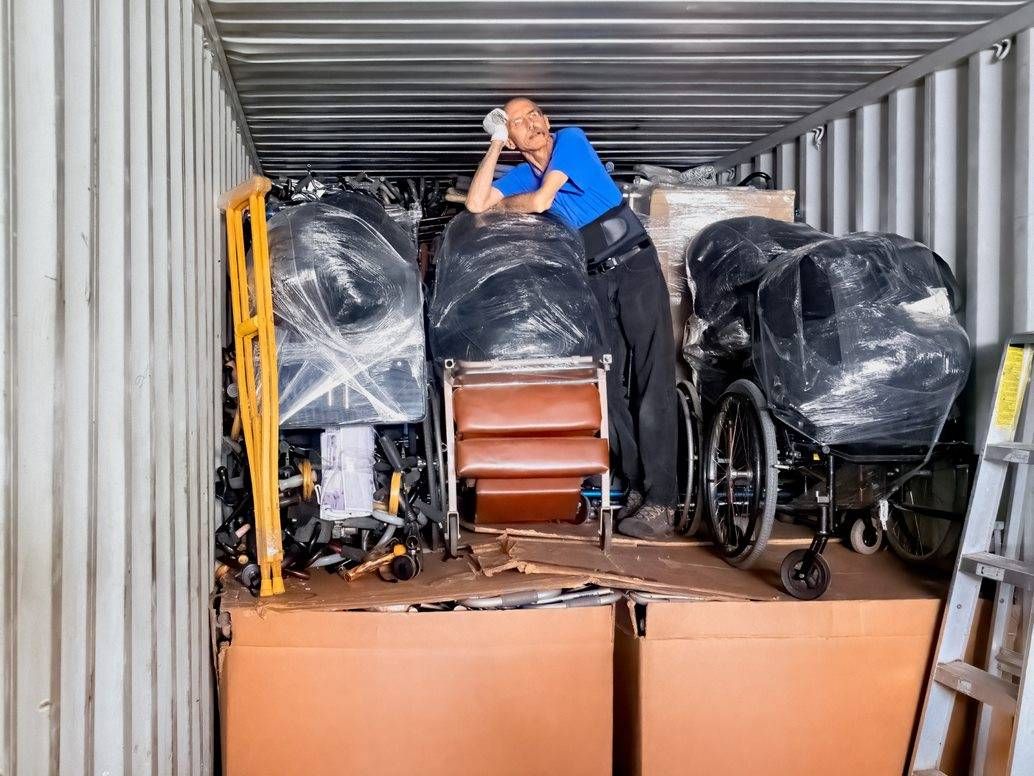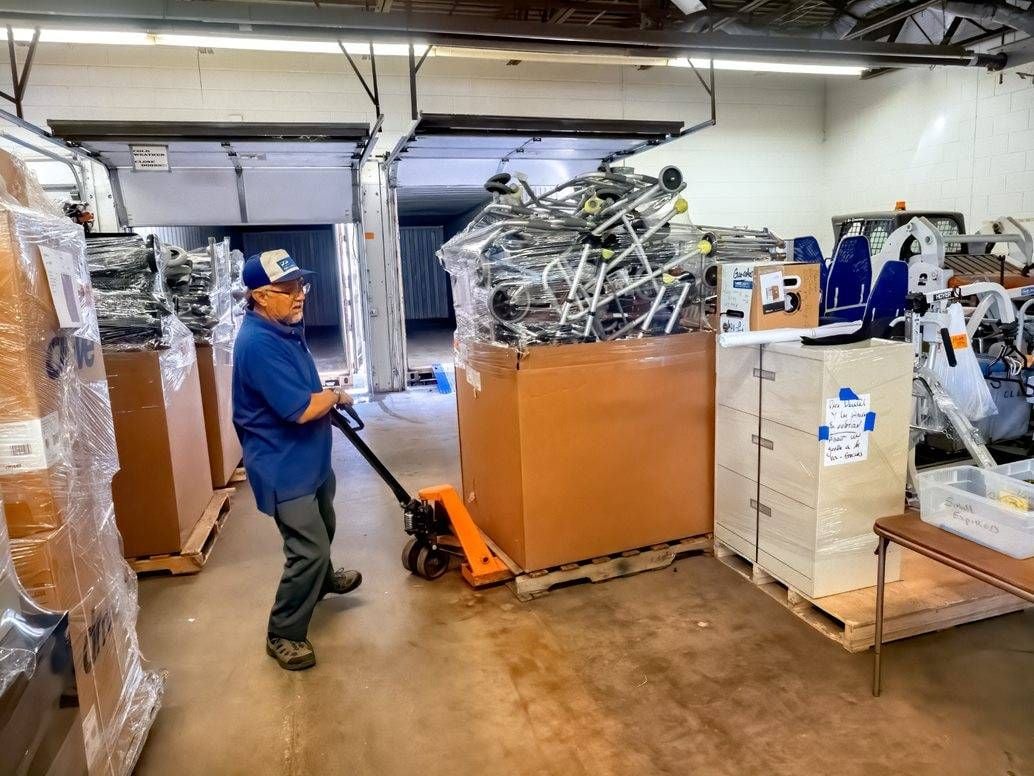Minnesota has a waste problem. How do we fix it?
One local organization diverts reusable medical supplies from the landfill and transports them to Bolivia.
Article by Alauna Yust | Video by Bobby Edwards
Minnesotans are good at a lot things, such as voting, entrepreneurship and – unfortunately – generating waste. The Minnesota Pollution Control Agency (MPCA) estimates that more than 1.8 million tons of waste ended up in our state’s landfills in 2017. Adding another sour note to that sad song, the MPCA estimates that nearly two-thirds of that waste could be reduced, reused, recycled or composted. If our tendency to toss continues, an additional 8 million tons of waste will end up in Minnesota landfills by 2040.

It’s true that lots of funding and human power have made positive change in Minnesota’s waste arena, with organics recovery programs and waste-to-energy efforts preventing some items from being landfilled. Minnesota’s recycling rates have also been on the rise for the last few decades. Still, much can be done to reduce waste in our state.
Saint Paul-based non-profit Mano a Mano has been working since 1994 to prevent one category of waste from ever reaching the landfill: medical supply surplus.
Founded by Joan and Segundo Velasquez, Mano a Mano started small and simple by collecting donations such as unused gauze and sterile surgical supplies, and shipping them to a hospital in Segundo’s home country of Bolivia.
“Our initial intent was to recycle medical surplus from this country, because we know that there was a lot that was being discarded here,” said co-founder Joan Velasquez, who knew that the cast-away equipment could literally “make the difference between life and death for many patients there.”
Because the volume of donations has grown so significantly, Mano a Mano recently moved operations out of the Velasquez’s home to a large warehouse in Saint Paul. Although the setting has changed, the Mano a Mano mission has remained pretty much the same.
“Hospital, clinics and individuals bring in their excess medical supplies,” explains Volunteer Warehouse Manager Ray Wiedmeyer, “and we sort them here [at the warehouse]. All of the stuff that you see in the warehouse would otherwise be in a landfill.” Wiedmeyer estimates that in 2018, Mano a Mano collected more than 200,000 pounds of medical supplies.

“Honestly, I’m a little bit appalled at how much medical surplus – it’s not waste, because we’re making sure that it’s not wasted – but, how much medical surplus there is in this country,” said Mano a Mano volunteer Patricia Ohmans, “and how vitally needed that equipment and those supplies are in the rural parts of Bolivia where Mano a Mano works.”
A partnership with Goodwill Easter-Seals of Minnesota helps bring in additional equipment such as walkers, wheelchairs, crutches and even the occasional oxygen tank.
“Many of these items would have ended up in landfills because we don’t have a way to sell them or recycle them,” says Chris Simon, Director of Logistics and Recycling at Goodwill Easter-Seals. “So this is a great way to partner, and we’d rather give it away than throw it away.”

The robust partnership is a great example of a statewide trend the MPCA hopes to see even more of: the recycling of useable goods. Every year since 2010, Minnesota has seen an increase in recycling rates, with combined recycling and organics accounting for nearly 45 percent of all waste in 2017.
For Mano a Mano and the people who receive the donations, these items can literally be life-changing.
“These are just transforming events for many people in their lives,” said Karen Abraham, another long-time Mano a Mano volunteer. “And it’s just things that are cast off here.”
So, next time you have a pair of crutches to discard, see if you can find an organization like Mano a Mano that can give them a second, transformative life.

This story is a Twin Cities co-production with Mano a Mano International.
The winter holiday season may be in the rear-view mirror - but if you're wondering how to give thoughtful gifts that have a minimal impact on the environment, then check out these tips on how to walk in "a low-waste wonderland."
Given the fact that the majority of Americans own a smartphone, it will come as no surprise that electronic waste is the fastest-growing waste stream in the world. But Saint Paul-based nonprofit Tech Dump sees e-waste as an area to make a difference for the environment and for the community.
